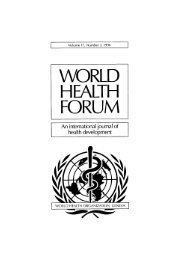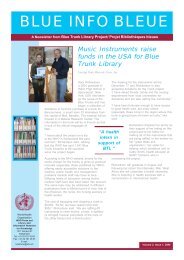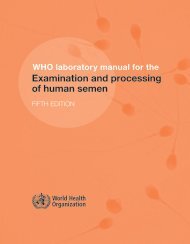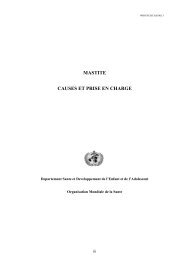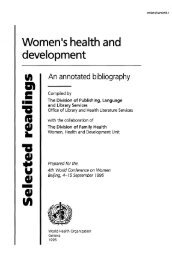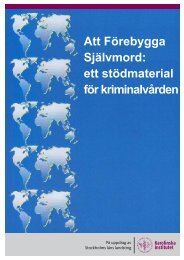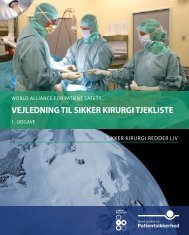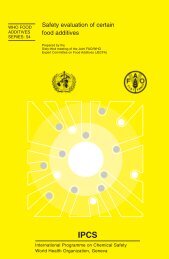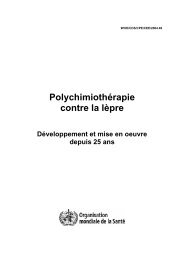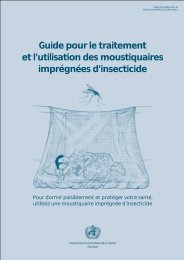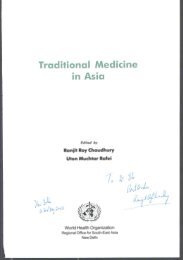Chagas - libdoc.who.int - World Health Organization
Chagas - libdoc.who.int - World Health Organization
Chagas - libdoc.who.int - World Health Organization
Create successful ePaper yourself
Turn your PDF publications into a flip-book with our unique Google optimized e-Paper software.
<strong>Chagas</strong><br />
2<br />
The impact of recent disease control initiatives on disease epidemiology since 1990 is<br />
highlighted in Table 1.<br />
Epidemiological<br />
parameters<br />
1990 2000 2006<br />
Annual deaths >45,000 21,000 12,500<br />
Cases of human infection 30 million 18 million 15 million<br />
New cases per year 700,000 200,000 41,200<br />
Population at risk 100 million 40 million 28 million<br />
Number of countries 21 21 21<br />
Challenges in <strong>Chagas</strong> disease control<br />
Table 1. Changes in the<br />
epidemiological parameters<br />
and decrease in the incidence<br />
of <strong>Chagas</strong> disease due to the<br />
<strong>int</strong>erruption of transmission:<br />
1990, 2000, 2006.<br />
Source TDR/PAHO/WHO<br />
Despite the gains that have been achieved, there is a long way to go. Several estimates<br />
indicate that there are still some 20,000 deaths per year in endemic regions due to <strong>Chagas</strong><br />
disease. In terms of morbidity, a 1993 <strong>World</strong> Bank report estimated that <strong>Chagas</strong> disease<br />
represented more than 2 million DALYs annually. Even if this burden of disease is<br />
adjusted in the context of currently available epidemiological information, <strong>Chagas</strong> disease<br />
still represents the second highest burden of disease (BOD) among Tropical Diseases in<br />
the Americas. This is still unacceptably high. Under ideal epidemiological surveillance<br />
conditions, and in line with current diagnostic capacity at the health services, at least<br />
55,585 persons per year would require etiological treatment against Trypanosoma cruzi<br />
– among the 108,595,000 inhabitants living in <strong>Chagas</strong> disease endemic regions in the<br />
Americas. It also must be underlined that <strong>Chagas</strong> disease is a health problem associated<br />
with poverty. Poor housing conditions, especially within the rural settings and the urban<br />
poverty belts of the large cities where access to adequate medical attention is limited or<br />
not available, are a major factor in transmission by domestic and peri-domestic vectors.<br />
<strong>Chagas</strong> disease also coexists with other poverty-related diseases, further complicating<br />
control and treatment. The triatomine insects and the disease that they transmit, will<br />
exist as long as poor housing conditions, frequent population migrations and irrational<br />
urbanization persist in Latin America.<br />
Reporte del grupo de trabajo científico sobre la enfermedad de <strong>Chagas</strong>, 2005 • TDR/GTC/06




